Key Takeaways
1. Connection is a fundamental human need, shaped by early life.
As people are dying, they will tell you that the most significant thing that remains in their life are their relationships, and these are usually relationships to other people.
We are wired for connection. Humans are not born developed; we grow and form our sense of self in relationship with early caregivers. This makes us creatures who need connection throughout life, not just with people, but also with ideas, places, and objects, to feel part of the wider world. Feeling connected releases feel-good hormones and supports mental health.
Balance is key. While under-connection leads to isolation and suffering, over-connection can dilute meaning and significance. Think of having some "hooks" out to connect deeply with chosen people and interests, rather than being hooked into everything all the time, which can lead to scattered, manic behavior. Finding your "tribe" or belonging to groups is vital for identity and well-being, helping us mirror those within and contrast with those outside.
Relationships are complex. Our unique histories, family dynamics, and belief systems make navigating relationships tricky. We often project our assumptions onto others, which can cause hurt. The best way to improve connections is to focus on our own role in the dynamic, as we can only control ourselves, not others.
2. Understanding attachment styles impacts how we form bonds.
We often mistake familiarity for truth.
Early bonds shape adult relationships. How we connected with our earliest caregivers influences how we form bonds in the present. We are often drawn to partners who evoke familiar emotions from childhood, sometimes confusing this familiarity with good chemistry or "coming home." This can lead to repeating unhelpful patterns.
Attachment styles:
- Avoidant: Shies away from closeness and commitment, often learned when early needs weren't consistently met.
- Insecure (Anxious): Experiences longing as love, often learned from intermittent attention from caregivers, and may be attracted to avoidant partners.
- Secure: Reliable, available, and dependable; relationships build slowly on steady satisfaction rather than dramatic highs and lows.
Breaking the pattern. No one chooses their attachment style, but awareness allows us to change. If you find yourself in patterns of unrequited love or attracted to unavailable partners, examine your early attachments. Recognize that your "type" might be triggering old longings, and consciously choose partners who offer reliability and dependability, even if it doesn't feel like "love at first sight."
3. Authenticity and vulnerability build real connection.
To truly connect with others we need to be not who we think we ought to be, or who we think they want us to be, but who we really are.
Hide and you won't be seen. Anxiety about how we come across can prevent genuine connection. If we never risk being ourselves or sharing our vulnerabilities, we never give others the opportunity to know us. Being seen requires daring to share, even when unsure how it will be received.
Shift focus from self to other. Overcome self-consciousness by cultivating curiosity in the other person. Being interested in them makes connection easier and more delightful. Practice speaking spontaneously and working things out in conversation, rather than filtering everything or assuming you know how others will respond.
Surrender is an act of love. Letting go of the need to be right or in control allows us to be impacted by others. This "surrender" isn't about being conquered, but about releasing rigidity to grow in relationship. It means offering something of yourself without knowing the outcome, lowering your guard, and trusting others to be themselves.
4. Conflict is inevitable; how you argue determines outcomes.
Learning to navigate those tricky moments doesn’t mean that you will stop disagreeing with the people around you.
Differences are normal. Every relationship will have conflicts because we all experience things differently based on our unique histories and perspectives. Disagreements aren't necessarily bad; they are opportunities to understand each other better. The goal isn't to avoid conflict, but to manage it constructively.
Common argument patterns:
- Thinking vs. Feeling vs. Doing: Conflicts arise when people have different dominant coping styles (logic, emotion, action) and expect others to react like them.
- It's Not Me, It's You: Blaming the other person deflects from our own contribution to the problem.
- Goodie vs. Baddie: Seeing ourselves as right and the other as wrong prevents resolution and fuels resentment.
- Facts vs. Feelings: Focusing only on logic ("fact tennis") ignores the emotional core of most disputes.
- Karpman Drama Triangle: Falling into roles of Victim, Persecutor, or Rescuer creates unhelpful cycles.
- Conflict Avoidant: Suppressing disagreements leads to resentment and distance, shrinking the relationship.
Aim for understanding. Instead of trying to "win" or prove you're right, aim for mutual understanding and empathy. Recognize that others' behavior has meaning for them, not necessarily what it would mean if you did it. Put judgment aside and be curious about the feelings behind their words and actions.
5. Shift focus from blaming others ("You") to owning your feelings ("I").
As we are in charge of ourselves rather than other people, if we want something to change, it is our responsibility to change ourselves.
Control your response. We cannot control other people's behavior, but we have power over how we react and respond. If you want a situation to change, start by changing your own actions and behaviors. This is much more effective than focusing on how others are annoying or need fixing.
Use "I" statements. When discussing problems, focus on your own experience rather than judging the other person. Instead of saying "You are irritating," say "I feel irritated." This takes responsibility for your reaction and makes the conversation less combative, allowing others to hear you without feeling attacked.
Avoid unhelpful language. Ban phrases like "You always...", "You are...", "You should...", and "You must...". These are often experienced as persecutory. State the consequence of a behavior and what you would prefer instead, focusing on your needs and feelings.
6. Emotions (like anger, anxiety, grief) are signals, not enemies.
Anger has got a bad press. But it isn’t the feeling that is bad. It is the behavior that sometimes goes with that feeling that can be destructive or frightening.
Feelings are information. Emotions are like warning lights on a car dashboard, signaling when we need to rest, connect, or address something. Ignoring or repressing feelings makes them "shout louder," leading to worse outcomes or even physical symptoms. We need to listen to our feelings, not be ruled by them.
Process emotions constructively. Learn to put feelings into words rather than acting them out or holding them in. This "processing" helps you gain control over the emotion. For example, express anger verbally or through physical outlets (like hitting a cushion) rather than lashing out at others.
Observe, don't become. Practice observing your feelings without becoming them. There's a difference between "I am scared" (defining yourself by the feeling) and "I notice I am feeling anxious" (observing the feeling from a detached perspective). This creates distance and allows you to make conscious decisions rather than just reacting.
7. Change is constant; resisting it keeps you stuck.
A mentally healthy person is someone who accepts this and adapts accordingly to the flux of their lives and the lives of those around them.
Life is flux. Change is the only constant. Resisting change or clinging to the idea of "forever" prevents growth and adaptation. While change can be difficult or unwanted, it is also necessary for emotional fitness and can be liberating.
Getting unstuck requires self-awareness. We often blame external factors or other people for keeping us stuck, but the power to change lies within ourselves. Identify your patterns of behavior and belief systems, especially those developed as adaptations to past environments that no longer serve you.
Challenge the victim mindset. Feeling like things just happen to you, blaming bad luck or others, prevents you from taking responsibility for your responses and actions. Even in the most powerless situations, like Viktor Frankl in a concentration camp, we have power over our own minds and where we direct our thoughts.
8. Break old habits and patterns through awareness and practice.
The brain is plastic; we can therefore change it.
Habits are highways. Old habits and patterns are like well-worn highways in your brain – easy and automatic. Forming new habits is like hacking a new path through the jungle – it requires conscious effort, strength, and patience.
Conscious decision is key. To change a habit, you must make a conscious decision to inhibit the old response and work to form a new one. Half-hearted attempts won't work; the brain will revert to the familiar highway, especially under stress.
Small steps matter. Change doesn't have to be dramatic. Tiny, fine-tuned adjustments to your routine or outlook can have a significant impact. Experiment with new things, even if they feel uncomfortable at first. Expand your comfort zone gradually by taking small steps outside it.
9. Loss and grief are natural parts of change.
What is clear to me is that this woman lost her mother too young, it was a terrible shock, and at a time in her life when she was still developing in relationship with her.
Change involves loss. Even desired changes can bring loss – mourning an old way of life, a past version of a relationship, or who you used to be. This creates a void that your psyche will try to fill. Breakups, children leaving home, or physical changes with age all involve grief.
Grief has no timeline. Mourning is a process that cannot be rushed and is experienced uniquely by each person. There are no set stages you simply pass through. Grief can come in waves, feeling as acute as it did initially, even years later.
Feel through the loss. Instead of trying to "deal with" grief, aim to "feel with" it. Allow yourself to mourn and express the difficult emotions. Suppressing grief can make it more intense and unmanageable. Sharing your feelings with others, even if they seem unusual, can bring connection and healing.
10. Contentment is a steady state, found by challenging negative thoughts and seeking internal fulfillment.
Contentment is about being satisfied with your life; it is a default background state that we can aim for in the long term.
Happiness vs. Contentment. Happiness is a fleeting, heightened state of pleasure. Contentment is a more stable, background state of satisfaction with your life, accepting all emotions, not just the pleasurable ones. Aiming for constant happiness is unrealistic; aiming for contentment is achievable.
Challenge your inner critic and negative thoughts. We internalize critical voices from our past, leading to feelings of inadequacy or dissatisfaction, even when outwardly successful. Recognize this inner critic as a familiar habit, not truth. Distance yourself from negative self-talk and stop taking invasive thoughts seriously.
Seek internal fulfillment. True fulfillment comes from internal referencing – doing things because they feel right and satisfying to you, rather than external referencing – doing things because they look good to others or fit societal expectations. Unpack internalized "shoulds" and identify what you truly desire.
Beware of scapegoating. We often blame external factors (partners, careers, physical traits) for our internal dissatisfaction or psychological pain. This is a way of avoiding the harder work of examining our true feelings and past injuries. Recognize when you are scapegoating one area of your life for problems rooted elsewhere.
Last updated:
FAQ
1. What is "The Book You Want Everyone You Love* To Read*" by Philippa Perry about?
- Comprehensive relationship guide: The book offers sane and sage advice to help readers navigate all their most important relationships, including with partners, friends, family, colleagues, and themselves.
- Therapist’s wisdom for all: Drawing on her experience as a psychotherapist and advice columnist, Perry distills psychological concepts into accessible, practical guidance for everyday life.
- Four-part structure: The book is organized into four main sections: How We Love, How We Argue, How We Change, and How We Find Contentment, each addressing a core aspect of human connection and personal growth.
- Real-life case studies: Perry uses letters from real people and her responses to illustrate common relational dilemmas and how to approach them with self-awareness and compassion.
2. Why should I read "The Book You Want Everyone You Love* To Read*" by Philippa Perry?
- Universal relevance: The book addresses issues everyone faces—love, conflict, change, and the search for meaning—making it valuable for readers at any life stage.
- Practical, actionable advice: Perry provides concrete tools and exercises for improving self-awareness, communication, and emotional resilience in relationships.
- Empathy and non-judgment: The author’s compassionate, non-prescriptive tone encourages readers to suspend self-criticism and judgment of others, fostering healthier connections.
- Accessible psychology: Complex psychological theories are explained in simple language, making the book approachable even for those new to self-help or therapy.
3. What are the key takeaways from "The Book You Want Everyone You Love* To Read*"?
- Self-awareness is foundational: Understanding your own belief systems, emotional patterns, and coping styles is essential for healthy relationships and personal growth.
- Relationships are central: The quality of your connections with others is the biggest determinant of well-being, and most personal problems are, at their core, relational.
- Change is possible and necessary: Old habits and defenses can be updated; taking responsibility for your actions and responses leads to greater freedom and satisfaction.
- Contentment over happiness: Lasting fulfillment comes from accepting all emotions, building meaningful relationships, and finding purpose, rather than chasing constant happiness.
4. How does Philippa Perry define and approach self-awareness in "The Book You Want Everyone You Love* To Read*"?
- Knowing your starting point: Self-awareness is likened to knowing your location on a map; without it, you can’t navigate to where you want to go in life or relationships.
- Examining belief systems: Perry encourages readers to reflect on the adaptations and beliefs formed in childhood and assess whether they still serve them.
- Observing reactions: She suggests noticing how you react to anger, make assumptions, and talk to yourself, as these patterns often need updating.
- Experimenting with change: Self-awareness is not about self-judgment but about gaining the power to experiment with new ways of thinking and behaving.
5. What are the main concepts about love and connection in "The Book You Want Everyone You Love* To Read*"?
- Connection is a human need: Perry argues that the idea of complete independence is a myth; humans are wired for connection and belonging.
- Attachment styles matter: How we were loved in childhood shapes our adult relationships, with patterns like secure, avoidant, and insecure attachment influencing our bonds.
- Authenticity and vulnerability: True connection requires being your real self, sharing vulnerabilities, and being open to being impacted by others.
- Balancing self and others: Healthy relationships support each person’s fulfillment outside the relationship, and boundaries are essential for maintaining a strong sense of self.
6. How does "The Book You Want Everyone You Love* To Read*" by Philippa Perry help readers handle conflict and arguments?
- Understanding argument styles: Perry identifies common patterns such as thinking/feeling/doing styles, fact vs. feeling debates, and the Karpman Drama Triangle (Victim, Persecutor, Rescuer).
- "I" statements over blame: She advocates for using “I” statements to express feelings and needs, rather than blaming or labeling others.
- Empathy and curiosity: The book encourages seeing things from the other person’s perspective and being curious about their feelings and motivations.
- Assertiveness and boundaries: Perry teaches how to be assertive without being aggressive or passive, and when it’s appropriate to end relationships that are no longer healthy.
7. What advice does Philippa Perry give on changing old habits and getting unstuck in "The Book You Want Everyone You Love* To Read*"?
- Awareness precedes change: Recognize your habitual patterns and the role they played in your past; only then can you consciously choose new responses.
- Small, experimental steps: Change is likened to forging a new path through the jungle—start with small, manageable experiments rather than expecting instant transformation.
- Practice and patience: Building new habits takes time and repeated effort; setbacks are normal and part of the learning process.
- Responsibility and agency: Perry emphasizes that while you can’t control others, you have the power to change your own actions, beliefs, and reactions.
8. How does "The Book You Want Everyone You Love* To Read*" address coping with loss, grief, and major life changes?
- Change brings loss: Whether chosen or imposed, change often involves mourning what was lost—relationships, roles, dreams, or parts of oneself.
- Grief is individual: There’s no set timeline or “right” way to grieve; Perry encourages feeling with, not just “dealing with,” grief.
- Processing emotions: She suggests setting aside time to mourn, expressing feelings through words or rituals, and seeking support from others.
- Growth through acceptance: Accepting and making friends with difficult emotions, rather than suppressing them, leads to healing and adaptation.
9. What are the key ideas about contentment and fulfillment in "The Book You Want Everyone You Love* To Read*"?
- Contentment vs. happiness: Perry distinguishes between fleeting happiness and deeper, more sustainable contentment, which comes from satisfaction with life as it is.
- Internal vs. external referencing: True fulfillment arises from doing what feels meaningful to you, not just what looks good to others or meets external standards.
- Managing the inner critic: The book offers strategies for recognizing and quieting self-critical thoughts, reframing envy, and focusing on personal growth.
- Meaning and purpose: Engaging in activities that bring joy, building community, and nurturing relationships are central to a meaningful life.
10. What are some specific psychological concepts and tools explained in "The Book You Want Everyone You Love* To Read*"?
- Attachment theory: Explains how early relationships shape adult attachment styles and influence romantic and platonic bonds.
- Karpman Drama Triangle: Describes the Victim, Persecutor, and Rescuer roles people fall into during conflict, and how to break the cycle.
- Fact tennis: A term for unproductive arguments focused on logic and point-scoring rather than understanding feelings.
- Observer self: Encourages developing an inner observer to notice and manage emotions, rather than being overwhelmed by them.
11. What are the best quotes from "The Book You Want Everyone You Love* To Read*" by Philippa Perry and what do they mean?
- “You are good enough exactly as you are, and who you are is a powerful and loving human being who is learning and growing every step of the way.” — Emphasizes self-acceptance and the ongoing nature of personal growth.
- “We often mistake familiarity for truth.” — Reminds readers that just because a feeling or belief is familiar doesn’t mean it’s accurate or helpful.
- “If you have to choose between guilt and resentment, choose guilt.” — Suggests it’s better to risk feeling guilty for asserting your needs than to live with ongoing resentment.
- “Feelings follow behavior.” — Encourages acting in loving, forgiving ways even if you don’t feel like it yet, as actions can lead to changed emotions.
12. How can readers apply the advice from "The Book You Want Everyone You Love* To Read*" by Philippa Perry in their daily lives?
- Practice self-reflection: Regularly check in with your feelings, beliefs, and habitual responses, using journaling or mindfulness exercises suggested in the book.
- Communicate openly: Use “I” statements, express vulnerability, and listen with empathy to deepen connections and resolve conflicts.
- Set and maintain boundaries: Identify your needs and limits, communicate them kindly but firmly, and prioritize your own well-being.
- Embrace imperfection and growth: Accept that mistakes and setbacks are part of learning, and focus on experimenting with new ways of relating to yourself and others.
Review Summary
The Book You Want Everyone You Love To Read* receives mixed reviews, with an average rating of 3.86 out of 5. Many readers appreciate Perry's non-judgmental approach and practical advice on relationships and emotions. Some find the book insightful and engaging, while others criticize it for oversimplification and lack of depth. The author's chatty style and use of reader letters as examples are generally well-received. However, some readers feel the advice is too basic or superficial. Overall, the book is seen as accessible and potentially helpful for those open to self-reflection.
Similar Books
Download PDF
Download EPUB
.epub digital book format is ideal for reading ebooks on phones, tablets, and e-readers.
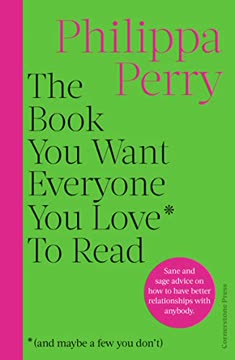

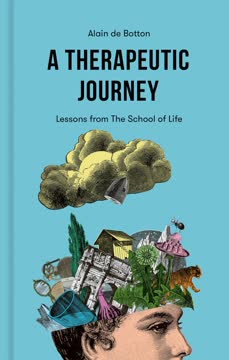

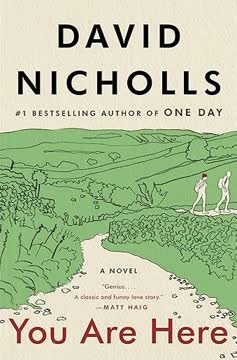
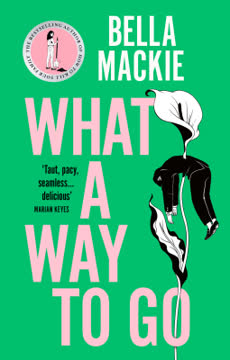
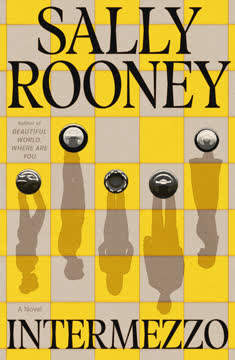
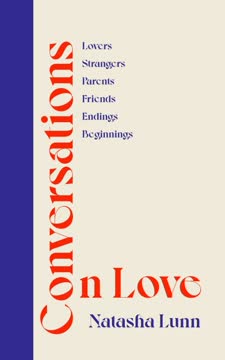

![The Book You Wish Your Parents Had Read [and Your Children Will Be Glad That You Did] Summary](https://files.sobrief.com/social/cover_the-book-you-wish-your-parents-had-read-and-your-children-will-be-glad-that-you-did_360px_1747136457.jpg)




